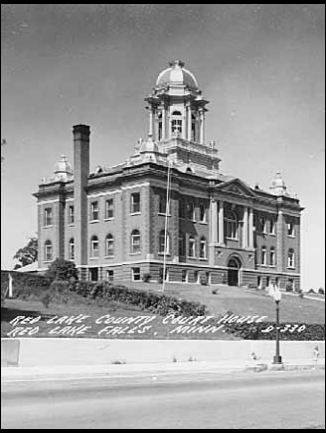 |
|
|
No amendment to the U.S. Constitution was so flagrantly ignored by the public than the 18th amendment prohibiting the sale of liquor. It survived 13 rocky years as the law of the land.
Moonshine making was illegal, but the clear white liquid did more for holding a farm against back taxes and putting food in the farmers’ families mouths than anything else. Few farmers had any choice, it was do or die. The number of farmers estimated to have dabbled in the fine art of distillation in Red Lake County has been placed at 50 to 90 percent. The representative few that were caught, though quite a few, were but the tip of the iceberg.
Stills were hid everywhere - in groves of trees, barns and sheds, even underground. Hiding and aging the torrid brew once it was made and poured into oak barrels took ingenious methods of secretivity. Many buried the barrels underground and marked the spot with a pile of straw.
Some farmers sold moonshine to local soft drink parlors and speakeasys. However, a greater number had their own markets in North Dakota and Minnesota. The prudent enterpriser who could do well at his sideline, developed reliable connections as he went along. Often the farmer would have his helper drive the load to its destination to avoid too much strange traffic in the country. The price of the moon varied with its quality and hauling distance, although it usually went for anywhere from $2 to $5 a gallon.
The many tons of sugar required by the bootleggers was phenomenal. As the grocers could not explain the need for the large amount of sugar without alerting the federal prohibition agents, the grocers “bootlegged” the sugar by the ton. It was hard to say where all the copper tubing and kettles for the stills came from or how the oak barrels were acquired; it all had to be done on the sly.
Bootlegging would have undoubtably been harder had not the county sheriff had a sympathic leaning towards the poverty stricken farmers. The old sheriff was well liked before the hoopla, and he remained a trusted, fair and electable official after that. Trusted sources say he tipped the bootleggers to when the feds were coming in. Others think he had his own method of “culling” the bootleggers making poor moonshine from circulation as a few small operations were getting caught by the feds. If the sheriff and his own deputies conducted a raid, the bootleggers got easy treatment. The farmer or his hired hand would pay the small fine and serve his sentence during the day; at night he’d let them all go home to sleep (or, more correctly, make moonshine) as the jail was small and all of them could not be accommodated.
The ones picked up by the feds did not fair as well. The fines were much stiffer and the prison a long ways from home. The year or so served in Leavenworth, euphimistically known as the time “Joe went to college” was not regarded shamefully by his neighbors and friends. After their releases many of the bootleggers set up shop again.
In town a few soft drink parlors were raided and the proprietors jailed; but most of them knew where to hide the stuff undetectable from even the feds. Of those that sold drinks, alcohol was preferred over moon because there was less of it to store and it made an innocent looking drink.
In the era of the upstairs, backdoor-peephole speakeasys, the feds were not easily entertained. An unknown face was never let in and the sales were carefully doled out.